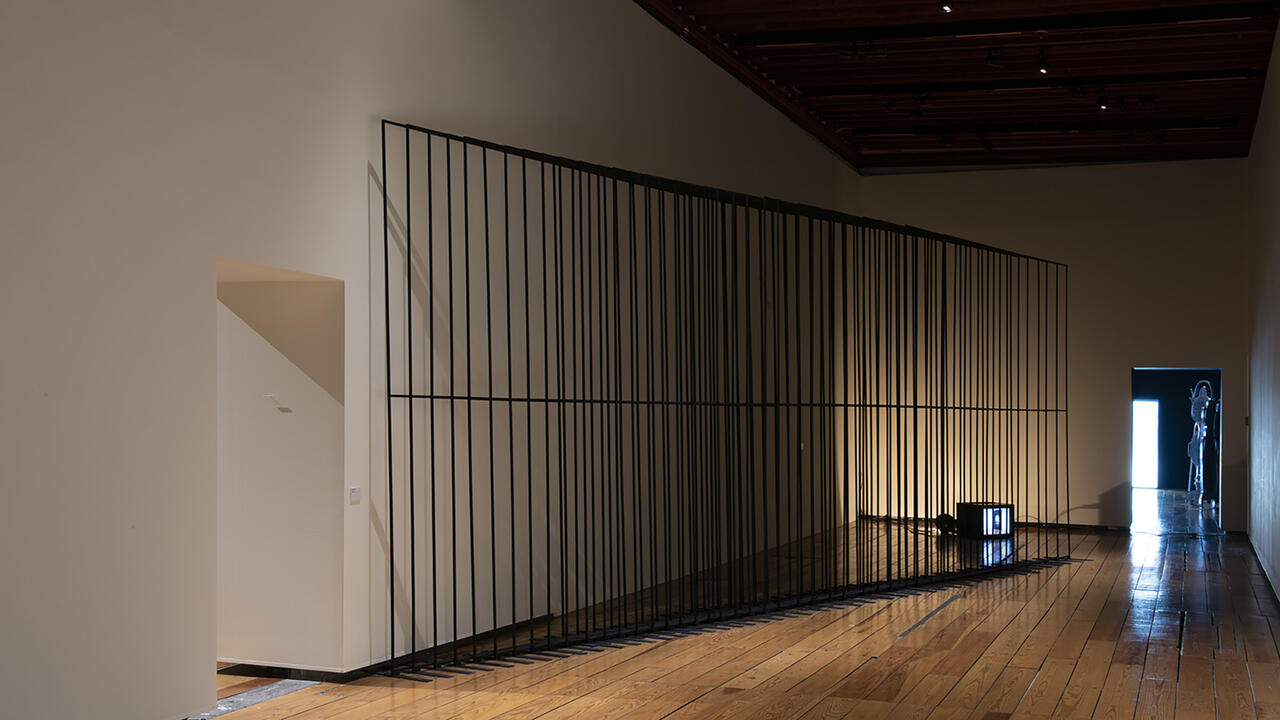Painting at the Edge of the World
Slightly behind the curve of the recent glut of painting shows - 'Colour Me Blind', 'Trouble Spot: Painting', and 'Examining Pictures' to name a few - 'Painting at the Edge of the World', curated by Douglas Fogle, intelligently resisted the tendency of painting exhibitions to be simply another contemporary painting sampler.
What makes the space between the paintings as interesting as the paintings themselves is good curation and impeccable installation. Arturo Herrera's wall painting All I Ask (1999), for example, was hung opposite Takashi Murakami's 7 2 7 (1996) and encouraged a dialogue that has less to do with the culture of painting than it does with popular culture's perversions of style and narrative. The theatre of content is nowhere to be found within these enormous graphic pictures but the space between them is ripe with a volley of context and meaning.
Another stunning pairing was Lucy McKenzie with Michael Raedecker. McKenzie makes paintings of Olympic athletes severed from the rules, fanfare and pageantry of the global spectacle of sports. Her figures, icons of political ideologies, are reduced to over-sexualized or neutered pawns in a surrogate world of power, success, failure and defeat. Curious (1998) reframes the classic 'crotch shot'. A back-side view of a female hurdler, feet positioned in the starting blocks, hands positioned on the ground with acrylic running shorts tightly contouring the athlete's rear creates a tension between the desire for this athlete to win the race and a desire to have her sexually. Raedecker's traditional landscapes of embroidery and paint juxtaposed with McKenzie's curious conceptual project refracts into issues not of genre or medium but of freedom and variance within the language of painting itself.
Many artists in the exhibition dwell not in the culture of painting but of design. Although canvas is their support and paint their medium, artists such as Julie Mehretu, Franz Ackerman, Haluk Akakce, Kevin Appel and dare I say even Laura Owens and Thomas Scheibitz are impervious to failure. Like many contemporary painters these artists work within a foolproof conceptual and formal methodology. They leave no room for vulnerability, allow no bad painting to mess things up. Yet by depriving themselves of risk and discovery they gain style and control. By including many artists who have a greater affinity with design than the trajectory of painting, Fogle underscored the susceptibility and precarious nature of the language. When confronted with the confidence of design and its contract with a social ideology, Paul Thek's small faux-naive 'picture light' paintings, Hiroshi Sugito's misty daydreams and especially Marlene Dumas's fragile psychologies are utterly singular, autonomous and significant.
'Painting at the Edge of the World' was also generous in its attention to the relationship between painting and performance. Francis Alÿs's The Leak (1995-2001) both literally and metaphorically draws a direct line back to Pollock. Puncturing a hole in a can of paint and dripping a continuous line of colour from the art centre's interior galleries out of the main entrance and into Minneapolis' icy urban midwinter landscape, Alÿs's path connects social space with cultural space, painting with history and action with image. Paul McCarthy's video works also tackle these issues, minus the poetry.
Painting's hang-up with representation, truth and photography has long subsided. On the contrary, much of today's photography has fallen under the spell of painting. Its indulgence in monumental scale, colour and composition led to the obvious inclusion of photographs by Andreas Gursky into a painting show. The not so obvious inclusion in the exhibition was German painter Eberhard Havekost whose modest scale and filmic canvases examine painting's illusionary logic when confronted with the special effects of the media. The compelling result reinforces the pliability and inventiveness of painted space. Finally, Margherita Manzelli's paintings of unseemly young women cling not 'on the edge of the world' but on the edge of the painting itself. Dangling their legs over the flatness of the picture plane they defy painting's rules and limitations. Like 'Painting on the Edge of the World' they underscore an inexhaustible, albeit vulnerable, arena of picture making.














